Keynote Speakers
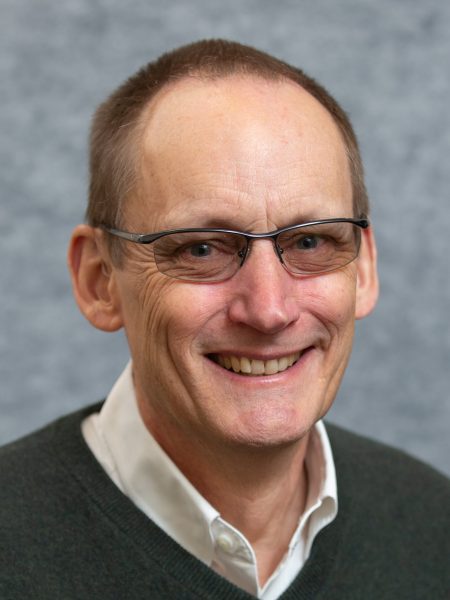
Jeffrey L. Mauk
Emeritus Geologist, Geology, Geophysics, and Geochemistry Science Center, United States Geological Survey
Critical minerals: Reasons for hope
Session 1: Conventional and unconventional sources of critical minerals
Abstract
The U.S. Geological Survey identifies 50 mineral commodities that are considered critical to the U.S. economy and national security. There are many reasons to despair for increasing domestic production of critical minerals, such as long permitting times, and loss of mineral processing and refining capabilities in the United States. However, sessions and presentations in this workshop provide reasons for hope. Improved coverage of landscape-scale data such as lidar, airborne geophysical surveys, and remote sensing data provide valuable tools to the exploration industry. Increasing research on the mineralogy and deportment of critical minerals can combine with efforts to increase recovery at operating mines and from mine waste. Expanding the critical minerals workforce through education and training at universities, trade schools, and community colleges will help provide the personnel that are required for the future of the industry, and education of the public can help mitigate the negative perception of mining. Innovations in mineral processing, refining, and recycling can increase recovery of critical minerals. The growing focus on critical minerals from all sectors of society might help provide support for future domestic mining, mineral processing, and refining.
Biography
Jeff Mauk has a BSc degree in Biology and Geology from the University of North Carolina at Chapel Hill, an MSc degree in Geology from the University of Montana, a Ph.D. in Geology from the University of Michigan, and seven years of industry experience as an exploration and mine geologist. He led the Mineral Deposit Research Group at the University of Auckland in New Zealand for nineteen years, and then spent more than 12 years as a Research Geologist at the U.S. Geological Survey in Denver, Colorado before retiring in May 2025.
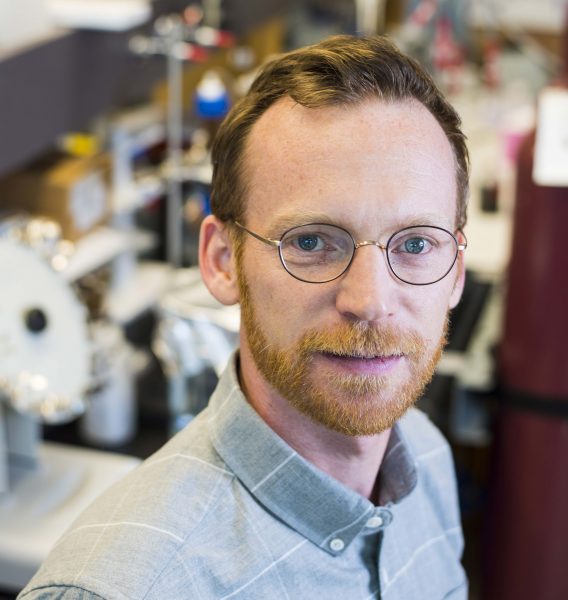
Daniel S. Alessi
Professor and Getty Oil Company Centennial Chair in Geological Sciences, Jackson School of Geosciences at The University of Texas at Austin
Development of lithium manganese oxide sorbents for the recovery of lithium from brines
Session 1: Conventional and unconventional sources of critical minerals
Abstract
Global lithium (Li) demand is projected to exceed traditional sources such as hard-rock mines and salar brines within the next decade. To bridge this supply gap, unconventional resources such as sedimentary brines, low-grade salar brines, seawater, and lithium-rich industrial wastewaters, are being explored. While vast, these resources often contain Li at low concentrations and thus require separation technologies that are both highly selective and durable for hundreds of cycles of use. Among the most promising direct lithium extraction (DLE) technologies are lithium manganese oxide (LMO)-based ion-exchange sorbents, because they are highly selective towards Li, have rapid Li uptake kinetics, and a high Li loading capacity. Despite these advantages, LMO sorbents can be degraded by components in geochemically complex, field-collected brines, a topic which is understudied in the literature. Two primary degradation mechanisms limit the usable lifetime of LMO: (1) the reductive dissolution of Mn(IV) caused by organic matter and sulfide species commonly found in natural brines, and (2) inherent lattice distortions during lithiation and delithiation cycles that lead to Mn(IV) reduction and Mn loss through disproportionation. To extend the lifetime of LMO, we explored several modifications, including: (i) applying a thin and porous zirconium oxide (ZrO₂) coating to physically separate Mn-reducing species from the LMO, while allowing Li⁺ and H⁺ exchange; (ii) doping the LMO structure with divalent cations to stabilize it; and (iii) embedding LMO nanoparticles in a polymeric matrix to shield them from detrimental constituents found in brines. Mn loss was lowered in all cases, without substantially impacting lithium recovery efficiency. Our findings advance the development of robust, scalable, and viable DLE technologies that can operate economically across a range of brine chemistries.
Biography
Daniel S. Alessi is a professor and the Getty Oil Company Centennial Chair in Geological Sciences in the Jackson School of Geosciences at the University of Texas at Austin. Prior to this, he was a professor and the Encana Chair in Water Resources in the Department of Earth and Atmospheric Sciences at the University of Alberta for 12 years. His group specializes in environmental geochemistry and geomicrobiology, with current focuses on developing technologies for critical minerals extraction, understanding the surface chemistry and reactivity of environmental materials such as pyrogenic carbon, iron oxides, bacteria, and clays, and on improving our knowledge of the water cycle in natural catchments and in industrial operations. He was inducted as a member of the College of New Scholars, Artists and Scientists of the Royal Society of Canada in 2022 and named a Fellow of the Royal Society of Chemistry in 2023.
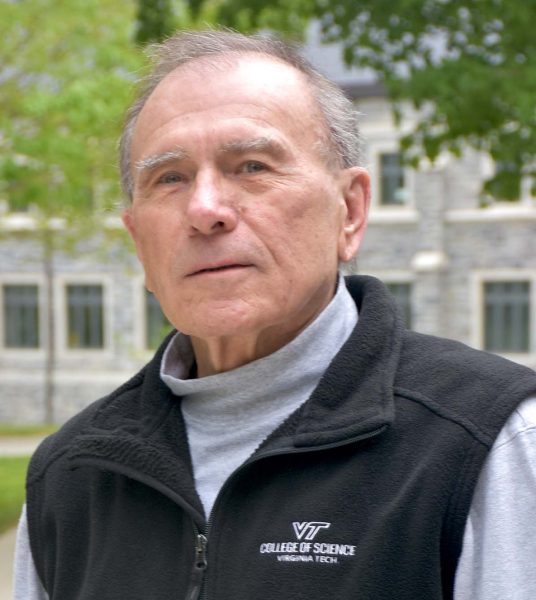
Robert J. Bodnar
C. C. Garvin Professor and University Distinguished Professor, Department of Geosciences, Virginia Tech
Challenges and Opportunities for Students in Critical Minerals Space
Session 2: Critical Minerals Workforce Development
Abstract
The global transition to renewable energy technologies, electric vehicles, and advanced electronics has created unprecedented demand for critical minerals and presents significant challenges as well as unprecedented opportunities for students pursuing degrees in geological sciences. As global demand for lithium, cobalt, rare earth elements, and other strategic materials accelerates to achieve a carbon-free energy environment, students entering geology programs face a complex landscape of educational and career considerations. Enrollment in U.S. geology departments has declined by over 40% since 2014, and translates to fewer graduates entering the mineral exploration workforce precisely when demand for critical minerals is surging. This trend, in turn, paradoxically creates exceptional career prospects for those who do pursue degrees in earth sciences, as the shrinking talent pool meets surging industry demand.
Students interested in working in critical minerals space must master increasingly sophisticated technical skills spanning traditional field geology, advanced geochemical analysis, remote sensing technologies, and data modeling techniques. Modern exploration geology now demands proficiency in statistical analysis for resource assessment and data interpretation, artificial intelligence and machine learning applications for pattern recognition in geological datasets, and programming for data processing and visualization. Students must also develop competencies in geographic information systems (GIS), drone operation and photogrammetry, geophysical data processing, and database management. This interdisciplinary skill set extends beyond traditional geological training to include elements of computer science, mathematics, environmental science, and business analytics—creating a demanding academic pathway that requires students to navigate multiple disciplines simultaneously. Additionally, the rapid pace of technological advancement means students must commit to continuous learning throughout their careers to remain current with emerging tools and methodologies.
These challenges are counterbalanced by remarkable opportunities. Students who successfully integrate geological knowledge with data science, AI/ML, and statistical analysis skills become exceptionally valuable to employers seeking to modernize exploration approaches. The convergence of geological expertise with computational skills opens diverse career paths spanning traditional exploration geology, geological data science, remote sensing analysis, predictive modeling, environmental consulting, and technology development for mining companies. Students with these hybrid skill sets command premium salaries and can transition between academia, industry, and government research positions.
The importance of critical minerals to national security and clean energy goals ensures sustained investment in both traditional geological research and innovative technological approaches. Machine learning applications in mineral exploration, statistical resource modeling, and automated geological mapping represent rapidly growing fields where students can contribute to cutting-edge research while building careers with exceptional growth potential. The global nature of critical minerals supply chains offers students international opportunities to apply their interdisciplinary skills in diverse geological and cultural settings.
Educational institutions and industry partners are responding to this growing need with enhanced scholarship programs, modernized curricula incorporating data science and AI/ML training, and industry partnerships that provide students access to real-world datasets and computational resources. For students willing to embrace the interdisciplinary nature of modern exploration geology, the convergence of geological sciences with data science and artificial intelligence presents an exceptional opportunity to build high-impact careers while addressing some of the most pressing resource challenges of the 21st century.
Biography
Robert J. Bodnar is the C. C. Garvin Professor and University Distinguished Professor in the Department of Geosciences at Virginia Tech in Blacksburg, VA. Bodnar earned a B.S. in Chemistry from the University of Pittsburgh, M.S. in Geology from the University of Arizona, and Ph.D. in Geochemistry and Mineralogy from Penn State University.
Bodnar’s research focuses on geofluids, and includes experimental, theoretical, and analytical studies of fluid systems at temperatures and pressures relevant to understanding geological processes occurring within the Earth. Much of Bodnar’s work is focused on the genesis of various types of ore deposits, including those that host critical minerals. Bodnar is a member of the U.S. National Academy of Sciences and currently serves as Vice-President of the Mineralogical Society of America.
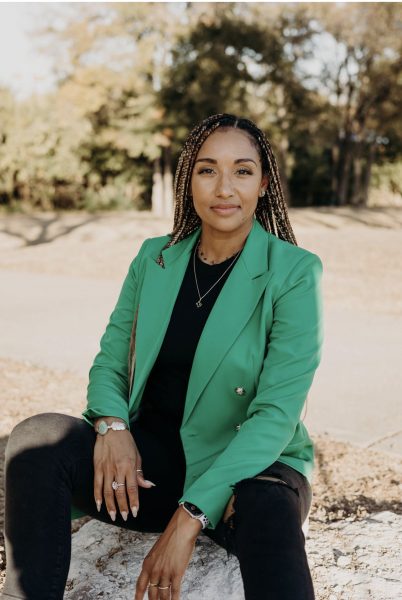
Leah Turner
Director of Education and Strategic Partnerships, CUAHSI
Inspiring the Next Generation: Success Stories and Strategies from Youth Outreach
Session 2: Critical Minerals Workforce Development
Abstract
Developing a robust workforce in critical minerals research and related fields requires early, sustained, and intentional engagement with youth. This presentation examines effective strategies for workforce development through youth outreach initiatives, with a particular focus on geosciences, engineering, and STEM education.
The session highlights models of practice from nationally recognized programs that have successfully engaged students, demonstrating how responsive design, strategic partnerships, and data-informed decision-making can drive long-term impact. The presentation also explores the role of federal and industry collaboration in scaling outreach efforts and aligning them with national workforce priorities.
Objectives include identifying key components of successful STEM outreach programs, understanding barriers to entry and persistence in geoscience-related fields, and providing actionable insights for designing educational pathways that contribute to the sustainability and innovation of the critical minerals sector.
Biography
Leah Turner is the Director of Education and Strategic Partnerships at CUAHSI. In this role, she leads efforts to expand educational programs and cultivate strategic partnerships that advance water science research and helps create sustainability for the organization. Leah is a social scientist with a Ph.D. in Higher Education from Ohio University. Previously, she served as the Program Director for GeoSTEM Career Exploration and Workforce Development at the University of Texas Jackson School of Geosciences, where she led complex initiatives and garnered support from key stakeholders, including the U.S. Department of Education, the National Science Foundation, and prominent organizations in the energy sector. Her expertise lies in translating complex data into actionable strategies to drive innovation and she is committed to building strong networks that support the next generation of leaders in science and research.
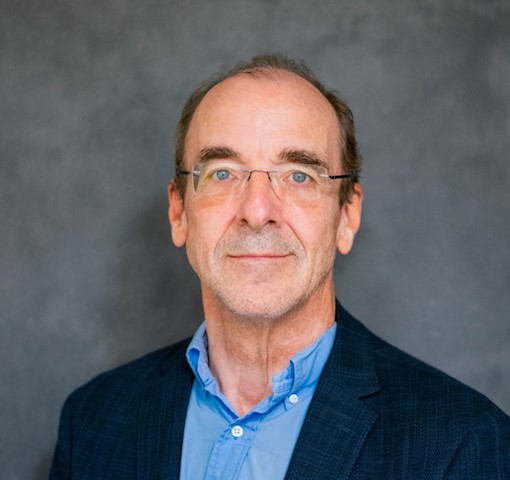
Douglas Wicks
Program Director, Advanced Research Projects Agency-Energy (ARPA‑E), United States Department of Energy (DOE)
Innovations to Address Challenges in Critical Mineral Processing
Session 3: Towards a Circular Economy – Innovations in critical mineral extraction and recycling
Abstract
Major challenges are still facing the mining and processing of critical minerals as national priorities change while facing serious geopolitically constrained mineral supply chains. As our national interests pivot from focusing on purely clean energy sources to focus on the reality of energy security, reliability and affordability one thing remains constant – increased need of critical minerals and the products derived from them. To begin with we need to acknowledge and understand the state of the US mining related industries as well as the demand of and viability of the downstream uses that are depend on mined metals. The scale of the problem is daunting, causing many to doubt our ability to address it. Though we are truly facing an abyss, the world has the necessary resources and with the rapid development and deployment mining/processing technologies you can solve this in a way that addresses the environmental, societal, economic and national security concerns that surround critical minerals.
Biography
Dr. Douglas Wicks served as a Program Director at the Advanced Research Projects Agency-Energy (ARPA‑E) from 2019 until June of this year. His focus at ARPA-E is on waste-to-energy, critical mineral mining and geologic hydrogen technologies. Wicks joined ARPA-E from Imerys, a French industrial minerals production and processing company, where he was most recently the Director of Transformational and External Innovation. At Imerys he developed an innovation network comprised of academic, contract research organizations, start-ups and strategic partners. Before joining Imerys Wicks worked in a variety of roles at several start-up companies focused on innovative materials. Dr. Wicks began his career at Bayer Corporation, where he ultimately became Vice President of Research for the Coatings and Colorants division. Wicks earned a B.S. in Chemistry from North Dakota State University and a Ph.D. in Polymer Science and Engineering from the University of Massachusetts Amherst.
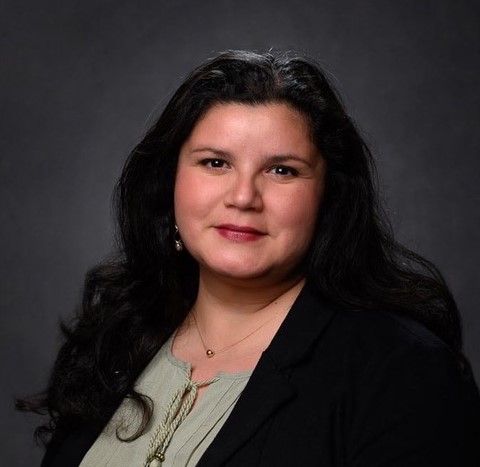
Jesica Urbina
Founder and CEO, Infinite Elements
Revolutionizing Critical Mineral Recovery: Bridging Biotechnology & Mining for a Sustainable Future
Session 3: Towards a Circular Economy – Innovations in critical mineral extraction and recycling
Abstract
As the global race for critical minerals accelerates, traditional mining and refining practices are increasingly at odds with environmental constraints, supply chain resilience, and geopolitical risk. In this keynote, we will explore how biotechnology offers a powerful, underutilized solution to this decades-old problem—recovering strategic metals not by digging deeper, but by thinking smarter. Drawing on Infinite Elements’ work in industrial bioprocesses, I’ll share how our systems recover critical metals and materials from industrial residues and waste streams that have not previously been accessible by conventional methods. These innovations represent more than just green alternatives; they are scalable, economically viable tools for reshoring mineral supply and decarbonizing extraction. I will also examine the systemic barriers that persist—despite strong government interest in reshoring critical mineral supply chains, funding remains inconsistent, and public-private coordination is fragmented. This talk invites geoscientists, industry leaders, and policymakers to consider how strategic alignment between science, government, and industry can unlock a circular critical minerals economy—and why biotechnology may hold the key to building it.
Biography
Jesica Urbina is the Founder and CEO of Infinite Elements, a company pioneering biotechnology-driven solutions for sustainable metal recovery from mining waste, e-waste, and smelting byproducts. With a background in biogeochemistry and environmental toxicology, Jesica has over 15 years of experience in bio-mining, leveraging cutting-edge biological processes to extract critical minerals in an environmentally responsible way. Under her leadership, Infinite Elements has secured federal funding and venture capital investment to scale its bioleaching and biofilter technologies, attracting partnerships with major mining companies.
A former NASA researcher, Jesica applies a unique systems-thinking approach to decoupling mineral extraction from traditional, high-impact methods, creating pathways for the circular economy of critical metals. She has worked extensively with industry leaders and government agencies to shape policies and innovations that reduce mining’s environmental footprint while securing the strategic mineral supply chains essential for the energy transition.
Jesica is a passionate advocate for bridging biotechnology and mining, pushing the industry toward a future where resource recovery is not just more efficient, but also more sustainable.
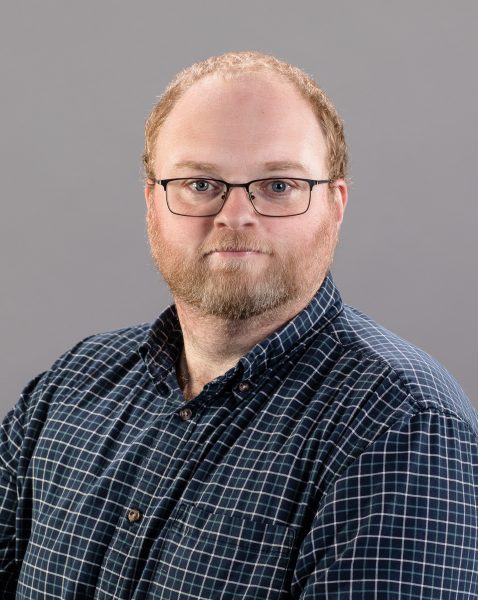
Simon Jowitt
Arthur Brant Chair of Exploration Geology, University of Nevada-Reno
Director and State Geologist, Nevada Bureau of Mines and Geology
The 21st Century Minerals Industry; Energy Transition Challenges and Opportunities and Policy Influences on Metal Supply and Demand
Session 4: Policy and Supply Chain Economics
Abstract
Modern standards of living mean that humanity already mines more metal now than at any other point in our history. The energy transition, the global move toward low- and zero-CO2 energy generation, storage and transport, will likely result in unprecedented levels of metal and mineral mining and production, especially of the metals and minerals considered critical as a result of supply chain insecurity. However, the specific metal and mineral needs of the energy transition and the balance of metal and mineral supply and demand are subject to significant amounts of uncertainty and a variety of different influences. These uncertainties include (but are not limited to): (1) Demand uncertainty, or uncertainties over the metals and minerals required for the energy transition and the timing of this demand as a result of various drivers, (2) Supply uncertainty, or the timing of supply changes as a result of increases or decreases in mining capacity, (3) Technology uncertainty, or uncertainty over the technologies to be deployed during the energy transition (e.g., Li ion battery cathode compositions, Li ion versus Na versus solid state versus other battery technologies, the impact of the development of the hydrogen economy, and much more), (4) Policy uncertainty or the negative and positive impact of policy relating directly or indirectly to mining and critical metal and mineral supply. Although all of these are clearly important, the impact of policy on both mineral and metal supply and demand is rapidly increasing. Policy impacts can include enhanced production of precompetitive data that positively impacts and derisks exploration, to changes to permitting that can increase or decrease the rate of project development. Environmental and social policy can potentially impact active mines as well as projects in development but can also act to improve the social and environmental permission to operate that is needed to acceptably extract the metals and minerals we need by mining. Policy development can also indirectly impact the minerals industry by changing demand, and the timing of demand, for end-products. Finally, minerals and metals have global supply chains that are impacted by changes in approaches to international trade and relationships and the import and export of metal concentrates and related products. The timing of policy developments, and the impact of those developments on aspects such as commodity prices and permitting, also needs to be compared to the often 10+ year lead-in time for a typical mine from discovery to production. This presentation will provide an overview of the likely impacts of the energy transition on metal supply and demand, the relationship between metal supply and demand and policymaking, and the implications for the minerals industry and the development and expansion of US domestic supply chains of critical, base, and precious metals and minerals.
Biography
Simon M Jowitt is the Director of the Nevada Bureau of Mines and Geology, Nevada State Geologist, and the Arthur Brant Chair of Exploration Geology at the University of Nevada Reno. He has degrees from the University of Edinburgh, the Camborne School of Mines, and the University of Leicester and spent eight years at Monash University in Melbourne, Australia before moving to spend seven years as an Assistant and then tenured Associate Professor of Economic Geology at the University of Nevada, Las Vegas. He joined the Nevada Bureau of Mines and Geology at the University of Nevada Reno in 2023. His research focuses on the use of geochemistry to unravel geological processes in a variety of settings with direct application to understanding not only mineralizing systems but also igneous petrology, mineral exploration, global tectonics and the links between magmatism and metallogeny. He has also undertaken extensive research on mineral economics, global metal resources and the security of supply of the critical elements, and the “economic” side of economic geology, as demonstrated by a number of recent publications on global base, precious, and critical metal and mineral resources and the impact of the energy transition on the global minerals industry. He has published more than 120 scientific papers, peer-reviewed book chapters and geological survey reports since 2010 and was awarded the SEG’s Waldemar Lindgren Award in 2014.
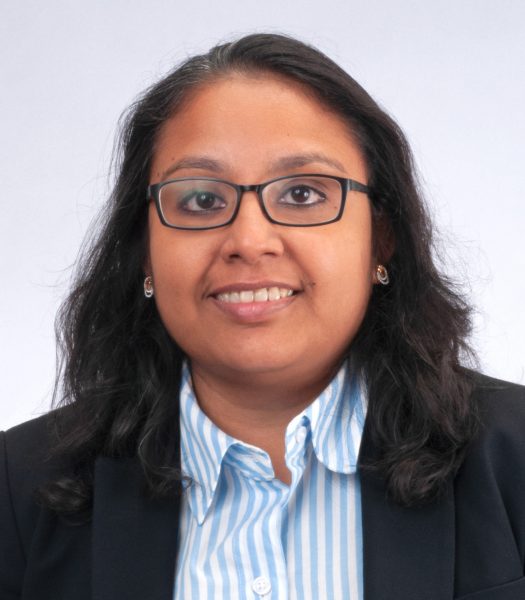
Jani Das
Research Assistant Professor, Bureau of Economic Geology, The University of Texas at Austin
Environmental impacts of critical mineral supply chains and policy implications
Session 4: Policy and Supply Chain Economics
Abstract
Demand for lithium-ion batteries (LIB) is increasing rapidly due to growth in sales of electric vehicles (EVs), expansion of electricity storage for renewable sources, and their use in providing other grid services. This growth creates challenges in the battery supply chain, especially in extracting and processing critical minerals. This presentation gives an insight into using Life Cycle Assessment (LCA) to determine the environmental impacts of varying critical material supply chains and seeks to understand where in the life cycle stage the environmental impacts are highest, thus highlighting actions that can be taken to improve sustainability of the LIB supply chain. The LCA allows us to depict a truer assessment of sustainability by looking at 16 environmental impacts on air, land, water, and climate across global supply chains and host communities. I shall be sharing results analyzed from different conventional and advanced supply chain routes of critical minerals such as lithium and cobalt, comparing the US and China routes. I will also talk about choosing optimum supply chain routes prioritizing different environmental indicators and invite researchers to direct their thoughts to using LCA for selecting sustainable options by technology advancements and substitutions.
Biography
Jani Das has been working on life cycle assessments (LCA) and grid dispatch modelling in the Comparing Electricity Options (CEO) project with Michael Young, at Bureau of Economic Geology, The University of Texas at Austin, since May 2023. She has published LCA studies on critical materials like lithium and cobalt, and electricity generating technologies in West Texas, as part of CEO. She has a background in Electrical and Electronics Engineering and masters from National Institute of Technology, Calicut, India She holds a PhD in Energy Science and Engineering from Indian Institute of Technology, Bombay, India, her dissertation on variability analysis of renewable energy systems. She was the department chair at Muthoot Institute of Technology and Science, India and has 18 years of academic teaching experience. She is an IEEE Senior Member.